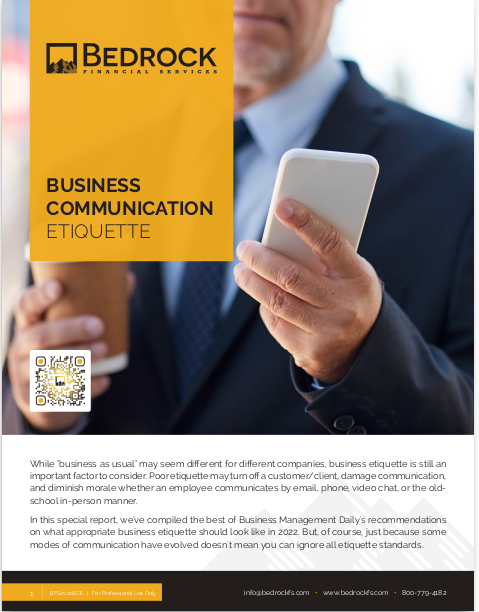Key Takeaways
-
Overly aggressive selling in financial planning often undermines client trust and long-term retention.
-
Clients respond better to educational, value-driven conversations than high-pressure pitches.
What Happens When Sales Overshadows Strategy
If you’re an independent insurance agent, you’ve probably been told that sales is the lifeline of your business. While that’s true, there’s a point where pushing too hard to close deals can hurt your credibility—and your client’s financial future. Right now in 2025, consumer expectations have shifted. People expect transparency, logic, and long-term strategy from their advisors. When you get too salesy, your message gets clouded, and so does the trust you’ve worked hard to build.
In financial planning, your value isn’t just in the policies you sell—it’s in how well you guide people toward their goals. If your approach feels more like a pitch than a plan, clients may pull back. And when that happens, you’re not just losing a sale; you’re missing out on a long-term relationship.
The Trust Gap You May Not Realize You’re Creating
The modern client is informed, skeptical, and often cautious. Overselling creates a psychological gap. Here’s why:
-
People don’t buy when they feel pushed. High-pressure tactics raise red flags.
-
It creates suspicion. Clients begin questioning whether the recommendation benefits them or you.
-
You risk losing the long game. Even if they buy once, they’re less likely to return.
You’re offering more than a product—you’re offering peace of mind. If that promise comes wrapped in aggressive persuasion, it’s hard for clients to trust the motive behind your advice.
Financial Planning Isn’t a One-Call Close
Financial planning requires multiple touchpoints, especially for retirement, estate, or tax-related discussions. Getting too focused on the sale in a single call makes the interaction transactional, not relational. A client thinking about a 20-year financial plan isn’t going to feel comfortable when the first interaction feels like a rush to close.
Instead, look at the average timeline:
-
Week 1-2: Discovery and rapport building.
-
Week 3-4: Assessment and solution alignment.
-
Week 5+: Decision-making and implementation.
This timeline is fluid, of course, but it underscores the need for patience and pacing.
The Right Way to Present Financial Strategies
So, how do you shift the conversation?
1. Start With Context, Not Coverage
Rather than diving into features or benefits, lead with a discussion of their current goals, concerns, and financial gaps. Ask questions like:
-
What’s your long-term goal for your family’s financial security?
-
Are you more concerned about income now or future growth?
-
Have you had financial plans in the past that didn’t work for you?
These questions turn the spotlight onto them, not your product. And that changes the tone of the whole discussion.
2. Use Education as Your Anchor
Clients today respond well to being educated—not convinced. Use educational framing to introduce any financial tool, explaining:
-
What it is
-
How it works
-
Why it might be relevant
-
What the potential risks are
This positions you as a resource, not just a rep. And it makes clients feel in control, which increases their engagement.
3. Present Scenarios, Not Sales Slides
When offering a recommendation, present at least two options:
-
A conservative plan
-
A growth-oriented plan
Discuss the pros and cons of each. Walk them through what happens under each route using simple timelines:
-
Year 1: Initial adjustments and setup
-
Year 3: Review of progress, flexibility points
-
Year 10+: Expected trajectory, risk considerations
Clients don’t just want to know the “what”—they want to understand the “when” and “why.” Grounding your suggestions in a longer-term scenario helps them feel confident about moving forward.
4. Let Silence Be a Strategy
In a traditional sales approach, silence feels uncomfortable. But in financial conversations, silence gives clients space to think.
After presenting a solution, pause.
-
Let them process.
-
Let them ask questions.
-
Let them lead the next step.
In 2025, client-centered communication means less dominating and more facilitating.
Selling Without Sounding Like You’re Selling
Let’s be clear—you are in sales. But effective financial planning communication is subtle. It doesn’t sound like a pitch, even though it moves the conversation forward.
Here are some ways to do that:
-
Instead of “This is the best policy for you,” say, “Here’s how this could fit into what you told me matters to you.”
-
Instead of “Sign here to lock in your rate,” say, “If you feel this is the right fit, we can get started this week.”
You’re giving the client control. And people commit faster when they feel they’re making the decision on their own terms.
Financial Strategy Is More Than Product Knowledge
Product knowledge is table stakes. Clients assume you know your stuff. What separates a trusted financial partner from a product pusher is your ability to:
-
See beyond the policy to the person
-
Listen more than you speak
-
Offer flexibility, not force
This is especially important in multi-layered planning—when you’re dealing with income protection, legacy planning, tax implications, and long-term care. These aren’t one-size-fits-all situations. Your ability to interpret, personalize, and explain matters more than any brochure.
What Today’s Clients Expect From You
You’re not just competing with other agents. You’re competing with online tools, robo-advisors, and AI-driven platforms. What people want in 2025 from a human advisor is:
-
Relatability: Speak their language, not industry jargon.
-
Predictability: Clear, structured process from start to finish.
-
Proactivity: You bring things to their attention before they ask.
If they feel any sense that your only goal is to sell them something, you lose that edge. They’ll go where the advice feels more genuine.
Your Follow-Up Says More Than Your Pitch
Follow-up is part of the planning process. A single email, call, or check-in can do more for trust than the original pitch. Here’s what works best:
-
A reminder of their goal, not your product
-
A recap of the last conversation in plain terms
-
A low-pressure prompt like, “Would you like to continue the conversation next week?”
This approach shows consistency, not desperation.
Mistaking Clarity for Aggressiveness
Sometimes agents think being clear means being aggressive. But there’s a difference:
-
Clear: “This is what it does, here’s how it works, and here’s where it fits for you.”
-
Aggressive: “You need to act now or risk losing this opportunity.”
In financial planning, clarity earns respect. Aggression invites resistance.
Building Long-Term Value Over Short-Term Volume
In today’s market, the agents winning are the ones thinking in decades, not days. A client who sticks with you for 20 years is worth far more than someone who buys once and disappears. That means every conversation needs to be rooted in value, not velocity.
-
Focus on lifetime relationship value.
-
Think about the second and third conversation before you rush the first.
-
Let your value compound, just like the client’s portfolio should.
Make Financial Planning Feel Like a Partnership
When clients feel like they’re being led—not sold—they stay longer, refer more, and trust deeper. And that’s where your real growth comes from. At Bedrock Financial Services, we help professionals like you master this approach. Our training, automation tools, and CRM support aren’t designed to make you push harder—they’re designed to help you connect smarter.
If you’re ready to stop selling and start guiding, sign up with us today. Let’s build a business model that lasts.







